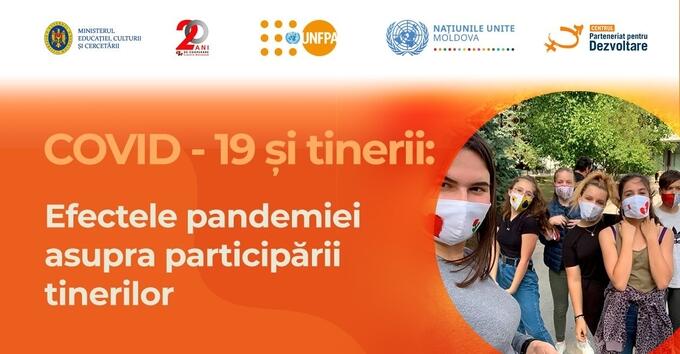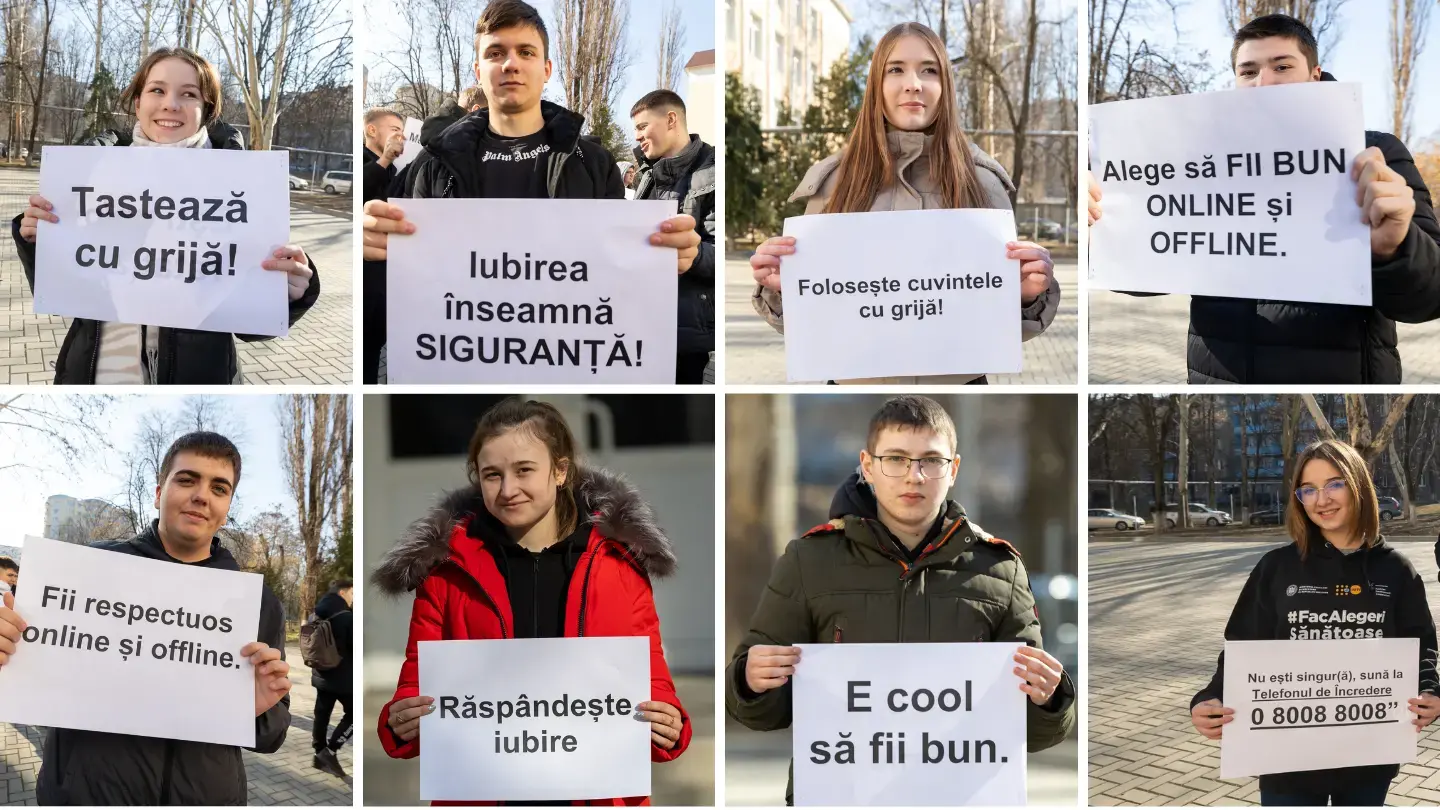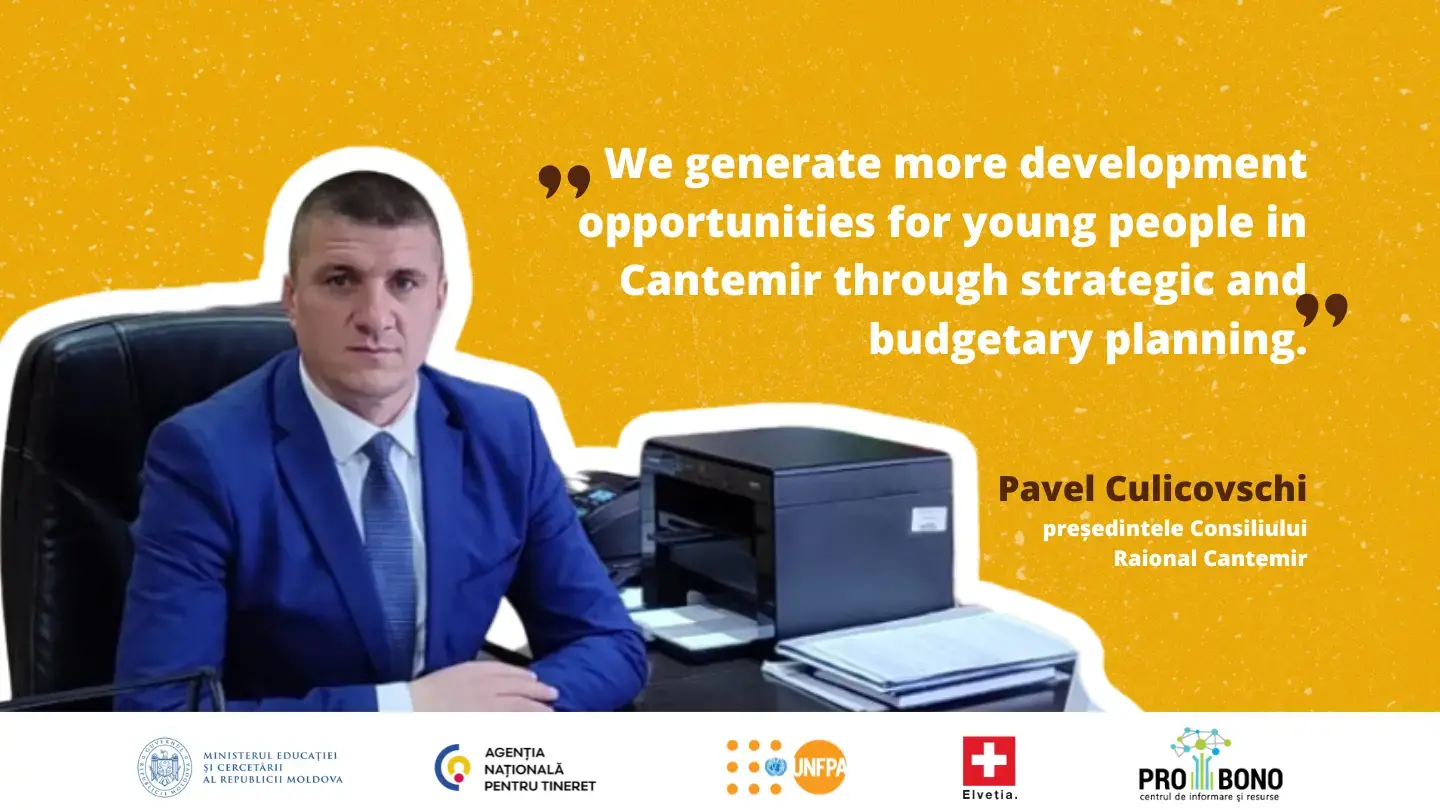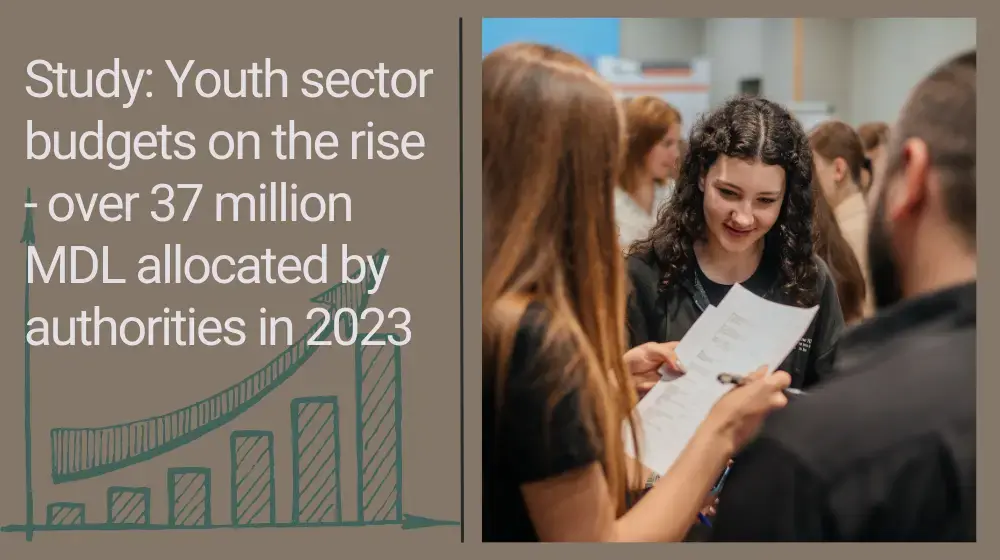Restrictions imposed by the pandemic crisis resulted in a lower level of youth participation. Nearly 60% of the young people with a high level of participation continued to engage actively in the community life during April-June of this year: they participated in working meetings of NGOs and Youth Centres (54.5%), and decision-making meetings for the community, association or Youth Centre (58.6%). During the pandemic crisis, this category of young people especially manifested themselves in community awareness-raising actions by signing petitions (65.5%) and helping older people.
The data underpinning the analysis were collected through an opinion poll conducted by the Centre of Sociological Investigations and Marketing Research „CBS-AXA” during 06-24 July 2020. The sample included a number of 1,010 people aged 15 to 24.
The conclusions of the analysis were presented on Tuesday, 27 October, in the context of the virtual event ‘COVID-19 and Young People: The Effects of the Pandemic on Youth Participation’, organised by Center ‘Partnership for Development’ (CPD) and the United Nations Population Fund (UNFPA).
‘Young people are an authentic power of Moldova that can contribute to strengthening resilience to the current demographic and social challenges, by engaging in intergenerational solidarity programs with older people, participating in Youth Centre’s activities and supporting community development. It is our common responsibility to provide young people with real participation and development opportunities both amidst the COVID-19 pandemic, and afterwards’, said Nigina Abaszada, UNFPA Resident Representative in the Republic of Moldova.
The analysis measures the impact of the pandemic crisis on the level of youth civic engagement in Moldova, in particular on the dynamic of the activism of young people with a high level of participation. Thus, according to the opinion poll conducted during July 2020, 3 clusters of young people were identified from the perspective of their civic engagement: (i) young people with a high level of participation, (ii) young people with a medium level of participation, (iii) young people with a low level of participation. The group of young people who already have a consistent and predictable behaviour regarding their engagement in the community life represents the reference cluster of this research. The share of youth with a high level of participation represents 10% of the overall population under analysis.
‘It is critical to understand what mechanism affected and reduced youth participation. Only being aware of the pandemic effects or impact, we can come up with a series of measures, including public policies meant to recover, encourage and promote youth participation’, mentioned Alexei Buzu, Executive Director of CPD.
The pandemic determined significantly lower participation of the most active category of young people, namely those of 15-17 years old. Prior to the state of emergency due to COVID-19 pandemic, the young people aged 15-17 manifested a higher civic engagement in comparison with other youth categories (finding outlined by this research). Their activism is directly associated with their daily educational environment, educational institutions being an enabling environment for the development of abilities that positively influence their likelihood to participate. As the activities involving physical interactions in these institutions were suspended during the pandemic, this measure had a greater influence on withdrawal of young people aged 15-17 from the participatory process.
On the other hand, the pandemic created preconditions for young people of 21-24 years old to have a higher representation among the activists during the crisis. Though before the state of emergency was established in the country, this group of young people had a lower motivation for participation, it appears that the pandemic crisis reversed this situation. Thus, during April-June 2020, young people aged 21-24 showed higher civic activism. This situation was probably determined by the massive withdrawal of young people aged 15-17 from the participatory process due to the suspension of the education institutions’ activity.
Using on-line communication and socialization platforms represented a form of participation during the pandemic in order to raise the awareness of and inform about protection methods against COVID-19. Though the pandemic crisis impeded the social activism of young people, it boosted innovation among the youth by increasing the use of on-line and social platforms for civic purposes. Up to 65% of young people used on-line platforms to inform their community about the methods of reducing the spread of COVID-19 among people in their community.
At the same time, the research showed that during the pandemic, young people accessed much more rarely the services of youth entities. Thus, the pandemic crisis has not only revealed but also outlined the low rate of accessing Youth NGOs, Councils and Centres. The opinion poll conducted in July 2020 disclosed a strong discouragement of young people to benefit from the activities organised by institutions and associations operating in the youth interest. Thus, in the last year, less than 10% of young people benefited at least once from the service of the youth entities from Moldova, which represents an extremely small share. This share was considerably reduced due to the restrictions imposed in April-June 2020. 62% of young people out of that 10% noted that they benefited rarer or never from services provided by the respective entities.
Given the negative impact of the COVID-19 pandemic on youth participation, the policy response has to outline interventions meant to address its long-term effects. In order to retain more young people in the participatory process, we have to reboot all tools and mechanisms that helped to educate youth to influence the decision-making process, to engage in the social life both on the local and national level. We do not exclude the possibility that due to the lack of procedures for rebooting or rethinking all secondary activities that used to stimulate young people to be more active in social life, Moldova will witness a long-term chronic decrease in the level of participation and in the share of participating youth. Therefore, we have to pay more attention to strengthening all active participation mechanisms and continuous monitoring of youth engagement and of further effects of the COVID-19 pandemic.
You can read the full text of the analysis HERE
The research was conducted by ‘Partnership for Development’ Centre, under the Joint Fund for the development of Youth Centres and strengthening the participation and civic engagement of young people in Moldova of the Ministry of Education, Culture and Research, the Swiss Agency for Development and Cooperation and the United Nations Population Fund.





